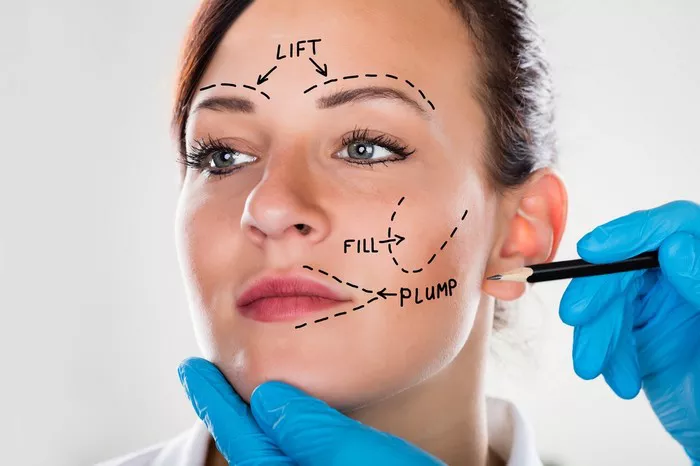A facelift, also known as rhytidectomy, is a cosmetic surgical procedure that aims to rejuvenate the face and neck by addressing signs of aging such as sagging skin, deep folds, and jowls. While the results of a facelift can be transformative, it’s important to understand that the recovery process is a crucial part of achieving optimal outcomes. In this article, we will delve into the phases of facelift recovery, factors that can influence healing time, and what you can expect during the healing journey.
Understanding the Phases of Facelift Recovery
Facelift recovery can be divided into several phases, each with its own characteristics and timeline. It’s important to note that individual experiences may vary, and the following timeline serves as a general guide:
Phase 1: Immediate Recovery (Weeks 1-2)
During the immediate recovery phase, you can expect the following:
- Swelling and Bruising: Swelling and bruising are common after a facelift and are most pronounced during the first week. Cold compresses and keeping the head elevated can help reduce swelling and alleviate discomfort.
- Bandages and Drains: The surgical area will be covered with bandages to protect the incisions and promote healing. Drains may also be placed to collect excess fluid, and these are typically removed within a few days.
- Discomfort and Pain: Mild to moderate discomfort and pain can be expected during the initial recovery period. Your surgeon may prescribe pain medication to manage any discomfort.
- Limited Activities: It is essential to rest and limit physical activities during this phase to allow the body to heal properly. Avoid strenuous exercises, heavy lifting, and any activities that could strain the surgical area.
Phase 2: Early Recovery (Weeks 2-4)
The early recovery phase is characterized by the following:
- Reduced Swelling and Bruising: Swelling and bruising gradually subside during this phase, although some residual swelling may persist. Applying arnica gel or taking arnica supplements, as recommended by your surgeon, may help expedite the healing process.
- Stitches Removal: Any non-dissolvable stitches are typically removed within the first week or two. This process is quick and relatively painless.
- Gradual Return to Activities: As swelling and bruising continue to decrease, you can gradually resume light activities. However, it is important to follow your surgeon’s instructions regarding the resumption of specific activities and the use of sunscreen to protect your healing skin.
Phase 3: Mid to Late Recovery (Weeks 4-6)
During the mid to late recovery phase, you can expect the following:
- Residual Swelling and Numbness: Some degree of residual swelling, particularly in areas such as the cheeks and neck, may persist. Additionally, temporary numbness or altered sensations in the surgical area may be experienced. These usually subside over time.
- Scar Healing: The incisions made during the facelift will gradually heal and fade over time. It’s important to follow your surgeon’s instructions for scar care, which may include gentle massage and the use of scar creams or silicone sheets.
- Return to Normal Activities: In most cases, patients can return to their regular daily activities, including work and social engagements, during this phase. However, it is crucial to continue to avoid activities that may put excessive strain on the healing incisions.
Factors Influencing Facelift Recovery Time
Several factors can influence the duration of facelift recovery. These factors include:
- Individual Healing Capacity: Each person’s healing capacity is unique, and some individuals may experience faster or slower healing compared to others.
- Extent of the Procedure: The complexity and extent of the facelift procedure can affect recovery time. A full facelift that addresses multiple areas of the face and neck may require a longer recovery period compared to a mini-facelift.
- Age and Overall Health: Younger individuals and those in good overall health generally tend to have shorter recovery times compared to older individuals or those with underlying health conditions.
- Adherence to Post-Operative Care: Following your surgeon’s post-operative care instructions diligently can significantly impact the healing process. Proper wound care, avoiding sun exposure, and attending follow-up appointments are crucial for optimal recovery.
What to Expect During Facelift Recovery
While the recovery process can vary, there are some general expectations to keep in mind:
- Patience is Key: It’s important to have realistic expectations and understand that the final results of a facelift may take several months to fully manifest. The initial improvements will become more apparent as swelling subsides and the tissues settle.
- Temporary Side Effects: It’s normal to experience temporary side effects such as tightness, itchiness, and dryness in the skin. These usually resolve as the healing progresses.
- Support System: Having a strong support system, including family and friends, can greatly assist you during the recovery process. Their emotional support and assistance with daily tasks can help alleviate any potential stress or discomfort.
- Open Communication: Maintaining open communication with your surgeon throughout the recovery process is vital. They can address any concerns, provide guidance, and monitor your progress to ensure a successful recovery.
Conclusion
Recovering from a facelift requires time, patience, and adherence to post-operative care instructions. Understanding the phases of recovery, factors that influence healing time, and what to expect during the process can help you navigate the journey smoothly. Remember to consult with a qualified and experienced plastic surgeon who can provide personalized guidance and support throughout your facelift recovery. With proper care and patience, you can enjoy the rejuvenating effects of a facelift and a renewed sense of confidence in your appearance.


